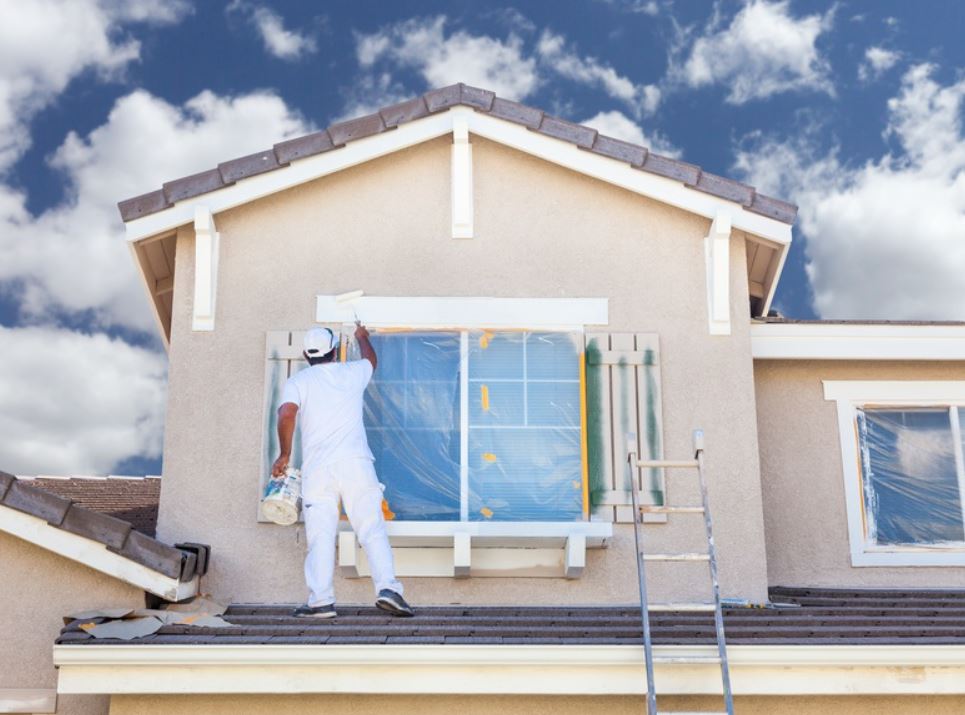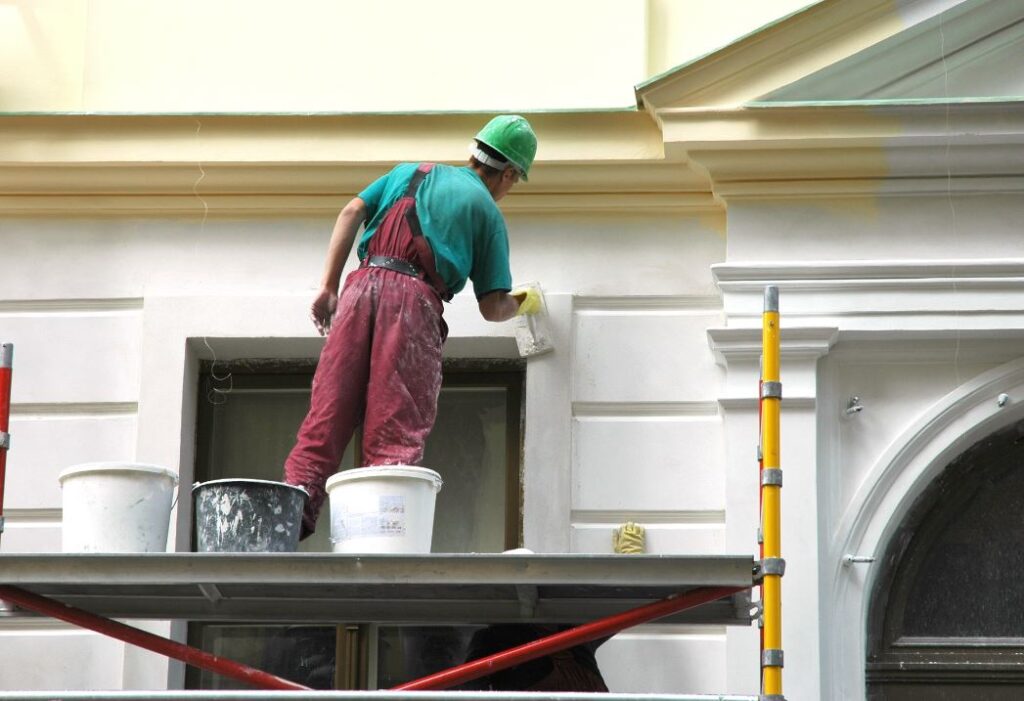Exterior House Painting: Tips for Achieving a Lasting and Stunning Finish
Painting the exterior of your home is more than just a cosmetic upgrade; it’s a vital project that protects the building’s structure and enhances its visual appeal. However, achieving a lasting and stunning finish is a challenging feat. It requires careful planning, the right choice of materials, meticulous preparation, and thoughtful application techniques.
Whether you’re looking to refresh the appearance of your house or gearing up to put it on the market, a well-executed paint job can transform your property’s exterior into a visual delight. In this blog post, we’ll explore the essential tips and considerations to guide you through the painting process. From choosing the appropriate paint for your climate to understanding the best painting practices, we’ll cover all you need to know to make your home’s exterior shine for years.

Choosing the Right Paint
Consideration of Climate and Weather
Selecting the right paint is crucial to ensure the longevity of your exterior painting project. Different climates demand specific types of paint. Humid environments require mould-resistant paints, while hot and dry climates may require UV-resistant products. Always consult with local experts or thoroughly research the paint best suited to your area’s climate.
Understanding Paint Types (e.g., Oil-Based, Water-Based)
Understanding the differences between oil-based and water-based paints is vital. Oil-based paints offer a smooth and durable finish but take longer to dry and may contain more volatile compounds. Water-based or latex paints, on the other hand, are environmentally friendly, dry quickly, and are easier to clean up. Your choice may depend on the existing paint on your house, the look you want to achieve, and your comfort level with the application.
Colour Selection and Trends
Colour selection is more than just personal preference. It’s about blending with the neighbourhood, following local regulations, and considering the architecture of your home. Utilize online tools, consult with professionals, and consider current colour trends to choose colours that will not only please the eye but add value to your property.
Proper Surface Preparation
Inspection and Repair of Damages
Before painting, a thorough inspection is necessary to identify cracks, chips, or other damages. Repairing these issues ensures a smooth surface, which is essential for the final appearance and durability of the paint.
Cleaning the Surface (Pressure Washing, Scraping, etc.)
Pressure washing or scraping off old paint and dirt is critical in surface preparation. It removes contaminants that could prevent the paint from adhering properly.
Priming – Why It’s Important
Priming is essential for sealing porous surfaces and providing a smooth base for the paint. It ensures better paint adhesion and enhances the paint’s colour.
Tools and Equipment
Brushes vs. Rollers vs. Sprayers
The choice between brushes, rollers, and sprayers depends on your desired surface and finish. Brushes offer control, rollers provide a consistent finish, and sprayers can save time on large areas. Each has its place, and using them effectively is key to a successful project.
Protective Equipment and Safety Considerations
Safety is paramount. Using gloves, masks, goggles, and other safety equipment is necessary to protect against potential hazards.
Selecting Quality Tools for Different Surfaces
Investing in quality tools is essential. Brushes, rollers, and sprayers designed for specific surfaces ensure proper application and an attractive result.
Painting Techniques and Best Practices
Technique for Different Exterior Surfaces (Wood, Brick, etc.)
Different surfaces require unique approaches. Techniques that work for wood might not suit brick or stucco. Familiarize yourself with the needs of each material to achieve the best result.
Importance of Multiple Coats
Applying multiple coats ensures an even, rich colour and enhances durability. It requires patience but pays off in the appearance and longevity of the finish.
Dealing with Common Problems (Drips, Brush Marks, etc.)
Mistakes like drips and brush marks happen, but they can be minimized or corrected with proper technique and attention to detail.
Timing and Weather Considerations
Timing is everything in exterior painting. Avoid painting in extreme temperatures or when rain is forecasted. The right conditions will ensure the paint dries properly and adheres well.
Maintenance for a Lasting Finish
Regular Cleaning
Regular cleaning helps maintain the appearance and integrity of the paint. A gentle wash can remove dirt and prevent buildup.

Inspection and Touch-Ups
Periodic inspections allow for early detection of wear and tear. Prompt touch-ups can prevent more significant issues and keep your home looking fresh.
Protecting the Paint from Environmental Damage
Use sealants or protective coatings to shield the paint from environmental factors like UV rays or harsh weather, adding years to the life of your paint job.
Hiring a Professional vs. DIY
When to Consider Hiring a Professional
Large or complex projects may require professional help. Hiring a professional ensures quality work, especially if you need help handling specific aspects of the job.
Tips for Selecting a Reliable Contractor
Look for licensed, insured, and well-reviewed contractors. Get multiple quotes and ask for references to make an informed decision.
Cost Comparison and What to Expect
Consider both the financial and time costs of DIY versus hiring a professional. Sometimes, the assurance of a professional finish might be worth the extra expense.
Exterior house painting is an intricate process that requires careful thought and preparation. From choosing the paint that aligns with your local climate and home’s material to understanding the significance of surface preparation, the tools required, and the techniques involved, each step plays a crucial role in achieving that lasting and stunning finish.
A well-executed painting project only happens by accident. It requires thorough planning, dedication, and understanding of the many facets involved. Whether you decide to undertake the task yourself or hire professionals, remember to take the time to plan well. Consider every aspect, from paint selection to ongoing maintenance, to ensure your home’s exterior reflects your desired beauty and resilience.
Leave a Reply